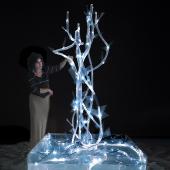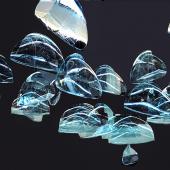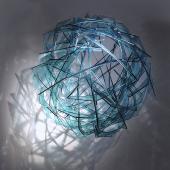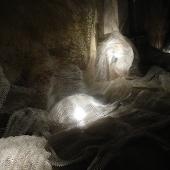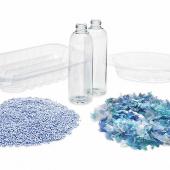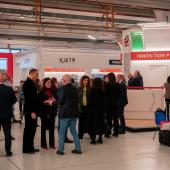Pina Inferrera, Behind the cover ItaliaImballaggio 11-12/2023

Installazione site specific cm 200x100.
Materiale plastico di riciclo, tubi in plexiglas e PET + luci
Pina Inferrera ‘s research is focused on observation of the anthropized environment, nature, people and their relationships. She often works on artefacts of industrial consumerism, symbols of the human condition.
Using discarded objects of modernity, she has created site-specific works of imposing dimensions, able to redesign space. She has used innovative materials which, in the 1980s, defined “Nature created by man”.
She has given priority to the investigation of matter in all its applications, to satisfy a need to use tactile and palpable manual skills that best correspond to the requirement for a form of communication that is as consistent as possible with its contemporaneity. At the same time, she has explored other expressive possibilities, such as photographs, videos and installations, in which space and light become the predominant “material”. She has always considered art as a fusion of different “means of expression” from which environmental and existential problems can be conveyed. As artistic director she has organised art events for Assocomaplast (the Italian plastics and rubber processing machinery and moulds manufacturers’ Association) and the IdeaVita Association, documented by appreciated catalogues. She has collaborated with Juliet Art Magazine, of which she was correspondent for the city of Bergamo. Graduated with full marks from the Brera Academy, she has exhibited in Italy and abroad.
What is said about her
Nature and artifice. In her artistic research, artist Pina Inferrera uses plastic, technological and recycled materials. She focuses on spectacular installations: she plays both with plastic materials and with light and water.
She establishes an alignment between nature and artifice, which has generated soft and brilliant “Chrysalises” and “Germinations” in which the origins of life, its transformability, and its potential for growth, animates materials which are, in themselves, unnatural. Once more there’s the pressing urge to transfer the properties of natural life to a cluster of plastic materials; to endow with vitality, through artistic means, what has no life. Dafne is a monumental sculpture, with an overpowering tension: it starts from the twisting of Bernini’s “Apollo and Daphne”, to become tree and fountain. It’s a tree from whose branches a vivid mood emanates, collected in a plexiglass basin, to be then recycled infinitely in tears dripping from fibre-optic bundles. Nature and technology merge; it’s not yet that “second nature” as virtual nature paraphrased by technology has been defined. Here, due opposites intersect: truth and simulation. […] The conflict between artificial and natural evocation, therefore, implies a rethinking of the so-called “second nature” which tends to overwhelm the real one, paraphrasing it with substitute means. (Maria Campitelli, 2003).
